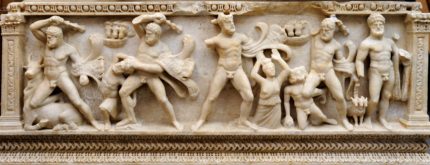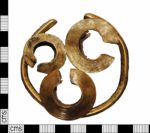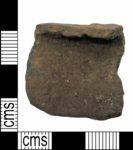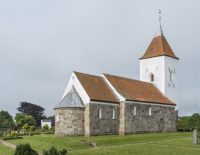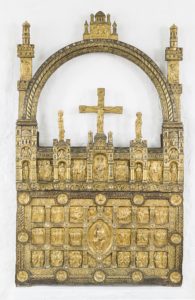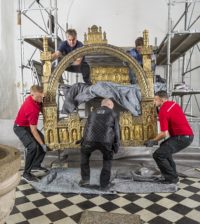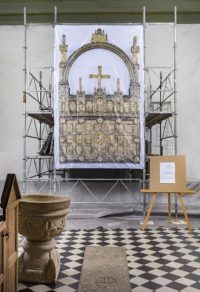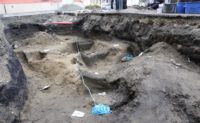 Archaeologists have unearthed the remains of what appears to be a Viking boat grave under the market square in central Trondheim, Norway. In the final days of the excavation, the team of archaeologists from the Norwegian Institute for Cultural Heritage Research (NIKU) recognized a boat-shaped feature in the soil even though there was no visible wood and the site had been repeatedly disturbed by later construction which pockmarked it with postholes and pits.
Archaeologists have unearthed the remains of what appears to be a Viking boat grave under the market square in central Trondheim, Norway. In the final days of the excavation, the team of archaeologists from the Norwegian Institute for Cultural Heritage Research (NIKU) recognized a boat-shaped feature in the soil even though there was no visible wood and the site had been repeatedly disturbed by later construction which pockmarked it with postholes and pits.
Further excavation revealed that there was no wood left to be found. It has long since rotted away leaving only the imprint of the boat, corroded rusty lumps and the a few barely preserved nails. Those meager features were sufficient for archaeologists to identify them as parts of a boat. It was at least four meters (13 feet) long and was placed in a north-south orientation.
Two long bones were also found, which is how we know this was probably a boat burial. They were in very poor condition, however, and only DNA testing can ascertain conclusively whether the bones are human. A piece of sheet bronze found leaning against one of the bones is likely a personal belonging interred with the deceased as a grave good. The very few other artifacts that have been discovered seem to be personal objects as well.
Dating is tricky. The team unearthed a small fragment of a spoon and of a key in one of the later postholes dug into what was once the middle of the boat. They can’t be sure these pieces are from the grave, but if they are, then they can loosely date the boat burial from the 7th to the 10th century. This is the first boat burial from this period discovered in downtown Trondheim.
The location away from today’s harbor and the fjord suggests that the boat grave dates from the late Iron Age, or perhaps the early Viking Age.
– It is likely a boat that has been dug down into the ground and been used as a coffin for the dead. There has also probably been a burial mound over the boat and grave, says NIKU’s Knut Paasche, a specialist in early boats.
He believes that the boat type is similar to an Åfjord boat, which has historically been a common sight along the Trøndelag coast.
– This type of boat is relatively flat in the bottom midship. The boat can also be flat-bottomed as it is intended to go into shallow waters on the river Nidelven.
Excavations are over for the season and there are no current plans to explore the site further.
